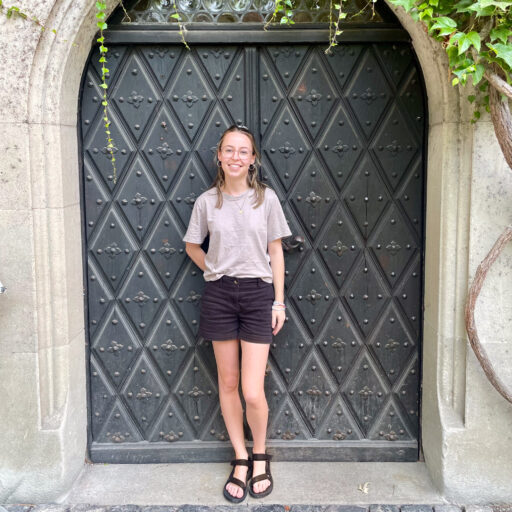ONE DAY IN
Wroclaw, Poland
After saying goodbye to Berlin, I hopped on a train with my new Intrepid group and made my way to Wrocław — a colourful city in southwest Poland that immediately charmed me with its blend of history, humour, and warmth. This was the first real day of our guided trip together, and I couldn’t have asked for a better place to kick things off.
Our group was made up of 11 people including our guide — four guys and seven girls, all between 18 and 35 years old, coming from across the globe: one American, one Hungarian, two Kiwis, two Canadians, and five Aussies. It was a great mix, and we had the best time together.
We arrived in Wrocław in the early afternoon, and checked into our hotel. As a kiwi myself, I felt very lucky to get to room with the only other kiwi, my now great friend Claire.
Next, we headed out on an orientation walk with our guide, Levi. As we wandered the cobblestoned streets, I was struck by how much this city feels like something out of a storybook — pastel-colored buildings, Gothic spires, and the gentle flow of the River Oder winding through it all.







But what really makes Wrocław feel magical? The gnomes. Definitely not something I was expecting, but they are everywhere. We loved spotting them throughout the city. Seriously, every five minutes, someone would shout “GNOME!”.



We spotted the tiny bronze sculptures hidden in the most unexpected places — peeking from windowsills, standing proudly in alleys, or lounging near curbs. These are the Wroclaw Gnomes, a playful but powerful symbol of resistance. They originated during the Orange Alternative movement in the 1980s — a peaceful protest against the Polish communist regime. Activists used gnome graffiti to subvert propaganda and staged humorous demonstrations dressed as gnomes. What started as subversive street art has now evolved into over 700 sculptures scattered across the city. Each one tells its own little story and adds to Wrocław’s sense of humor and heart.
We stopped for a late lunch in an authentic Polish restaurant, and tried the famous pierogi – Polish dumplings made with potato and cheese. They were very tasty!

Later, we visited the Colorful Backyards of Nadodrze, a once-neglected neighborhood that’s been transformed by vibrant murals and public art. Every corner was bursting with color and creativity — it felt like walking through a living gallery.



From there, we strolled along the beautiful River Oder, its barriers adorned with padlocks, and made our way to Wrocław Cathedral, its twin spires towering dramatically over the city.


As the day wound down, we experienced one of Wrocław’s most unique traditions — watching the Wrocław Lamplighter make his rounds on Cathedral Island. Dressed in a black cape and top hat, he lights each of the 103 gas lanterns by hand with a long pole, just as it’s been done since 1846. It felt like stepping into another century. There was something quietly magical about watching him move from lamp to lamp, casting a soft glow over the cobbled streets as the sun set. Wrocław is one of only two cities in Europe that still uphold this historical tradition.

We ended the evening with tired feet, already swapping stories and inside jokes over dinner. Wrocław may not be the most famous European city, but its personality is unforgettable — and it’s the place where our travel group started to really come together.




Leave a Reply